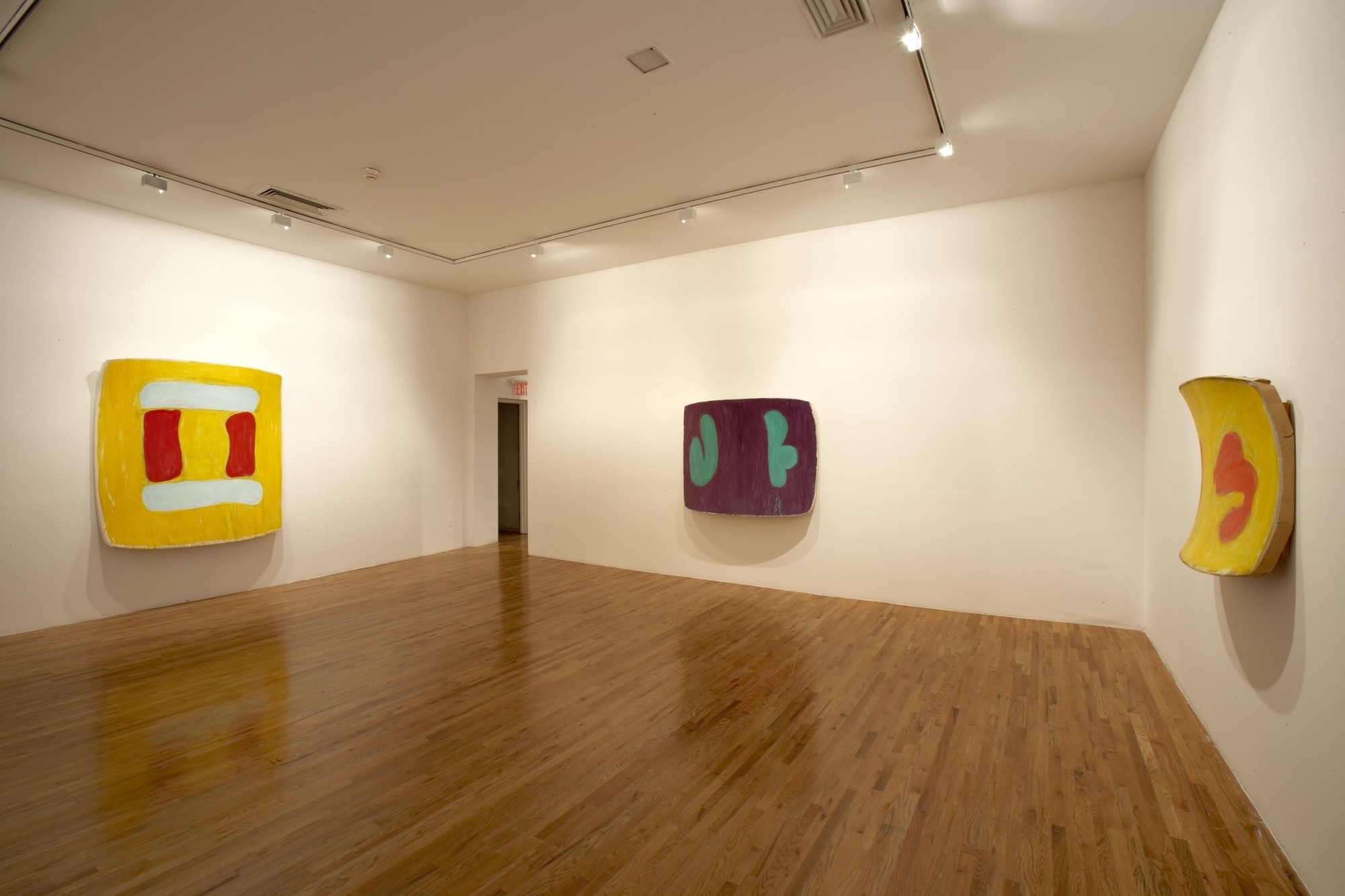Ron Gorchov
Double Trouble
25 Jun - 20 Nov 2006

Installation view of the P.S. 1 exhibition "Ron Gorchov: Double Trouble"
June 25–October 9, 2006. INPS1.941.15
June 25–October 9, 2006. INPS1.941.15
P.S.1 Contemporary Art Center is pleased to announce the return of Ron Gorchov, an artist from the institution's inaugural Rooms (1976) exhibition. Gorchov was one of the 78 artists who participated in creating installation and studio-produced work meant for specific rooms and spaces in the then newly revitalized P.S.1 building. He was also included in a P.S.1 group show in 1979. His newest body of work will be presented in Double Trouble, an ambitious exhibition featuring new and recent paintings, many shown for the first time. Double Trouble is on view in the Third floor Main Gallery from June 25 through November 20, 2006.
Since the late 1960s Gorchov has explored the possibilities of painting as an object rather than as representation. Early in his career, he experimented with the shape of the canvas as did the artists Frank Stella, Robert Mangold, and Richard Tuttle and created the original form that has become his signature.
Gorchov's unconventionally shaped canvases have been given many names—saddles, masks, shields—yet none have managed to describe them accurately. Perceptually perplexing by bending both inwards and outwards, the works are simultaneously convex and concave. By employing these shapes Gorchov avoids the traditional obstacles of painting, such as negotiating corners, edges, and exact verticals and horizontals. His paintings have a three-dimensional quality, an element inherent in their objectness.
Ron Gorchov (b. 1930) moved from Chicago to New York City in 1953, after having attended University of Mississippi, Oxford; School of the Art Institute of Chicago; and University of Illinois, Urbana-Champaign. He had his first solo show at Tibor de Nagy Gallery, New York, in 1960, and has subsequently exhibited at institutions such as The Museum of Modern Art, Whitney Museum of American Art, Queens Museum of Art, New Museum of Contemporary Art, and P.S.1. Gorchov's paintings are in the permanent collections of The Museum of Modern Art, Whitney Museum of American Art, the Guggenheim, and The Metropolitan Museum of Art. He currently lives and works in New York.
This exhibition is organized by P.S.1 Director Alanna Heiss.
Since the late 1960s Gorchov has explored the possibilities of painting as an object rather than as representation. Early in his career, he experimented with the shape of the canvas as did the artists Frank Stella, Robert Mangold, and Richard Tuttle and created the original form that has become his signature.
Gorchov's unconventionally shaped canvases have been given many names—saddles, masks, shields—yet none have managed to describe them accurately. Perceptually perplexing by bending both inwards and outwards, the works are simultaneously convex and concave. By employing these shapes Gorchov avoids the traditional obstacles of painting, such as negotiating corners, edges, and exact verticals and horizontals. His paintings have a three-dimensional quality, an element inherent in their objectness.
Ron Gorchov (b. 1930) moved from Chicago to New York City in 1953, after having attended University of Mississippi, Oxford; School of the Art Institute of Chicago; and University of Illinois, Urbana-Champaign. He had his first solo show at Tibor de Nagy Gallery, New York, in 1960, and has subsequently exhibited at institutions such as The Museum of Modern Art, Whitney Museum of American Art, Queens Museum of Art, New Museum of Contemporary Art, and P.S.1. Gorchov's paintings are in the permanent collections of The Museum of Modern Art, Whitney Museum of American Art, the Guggenheim, and The Metropolitan Museum of Art. He currently lives and works in New York.
This exhibition is organized by P.S.1 Director Alanna Heiss.
